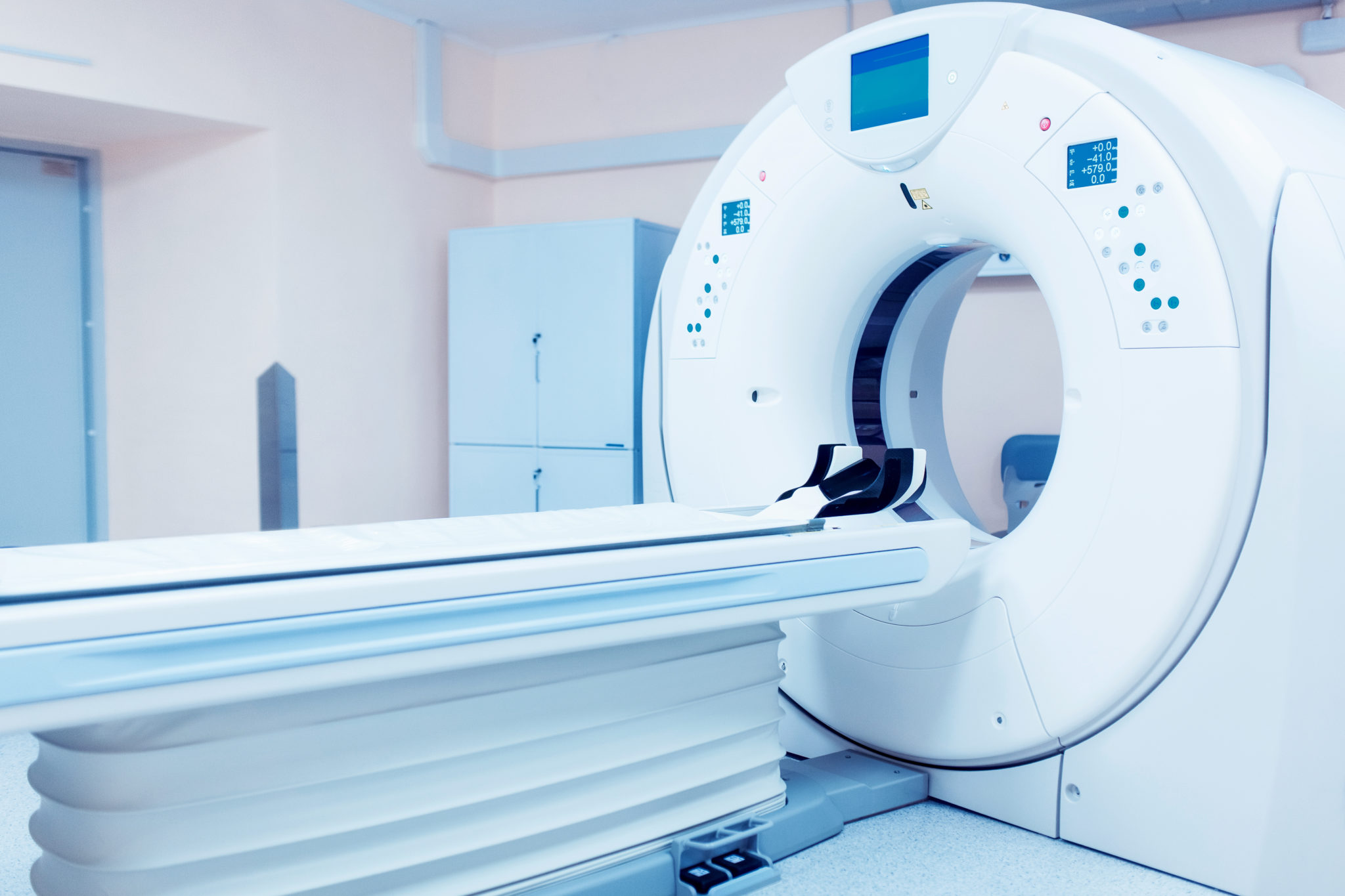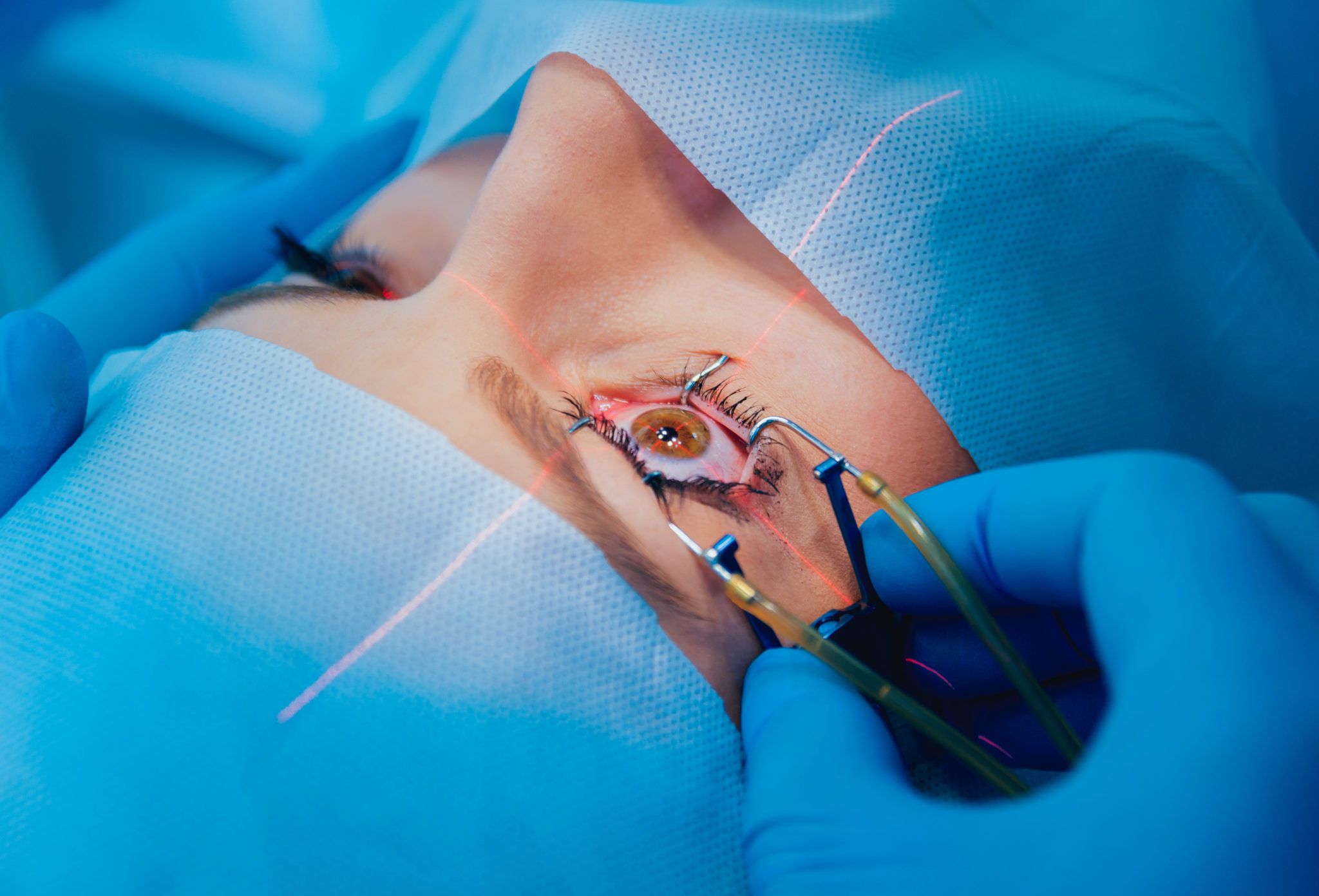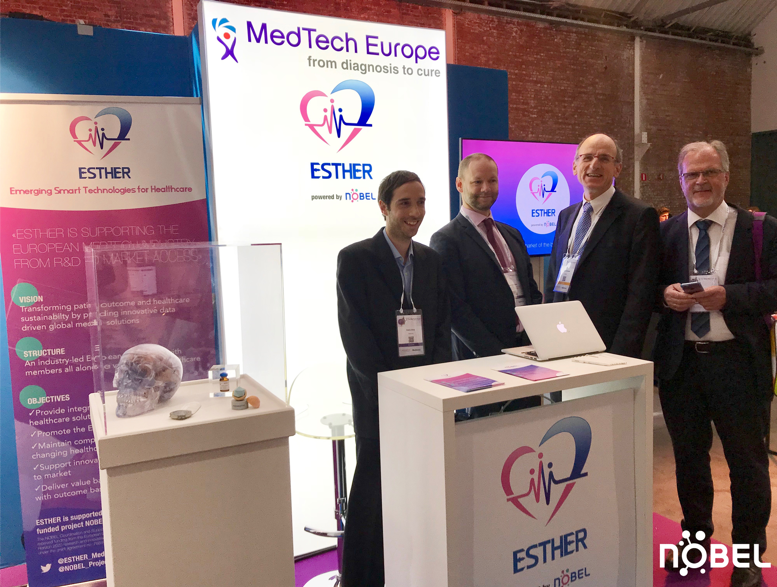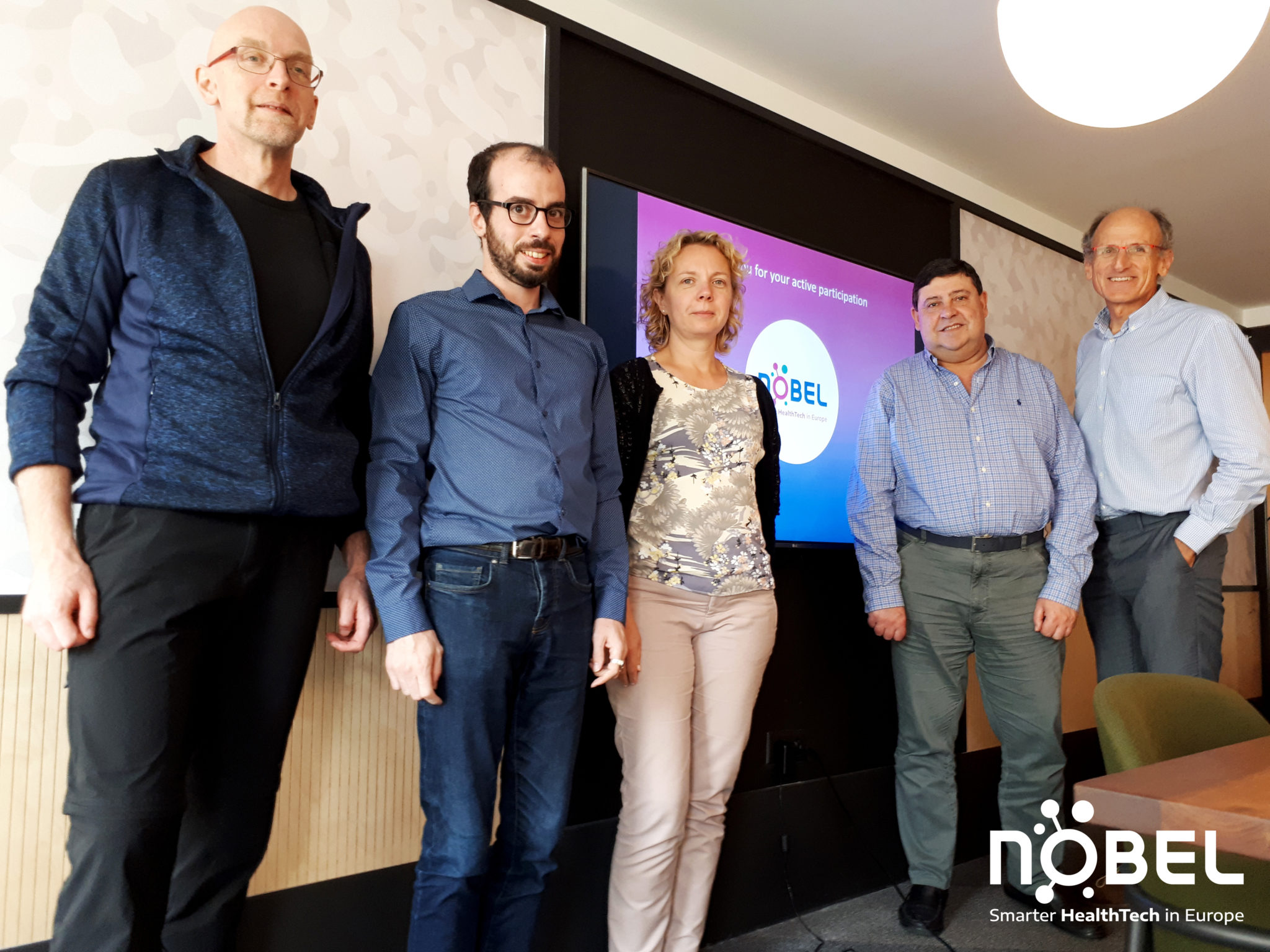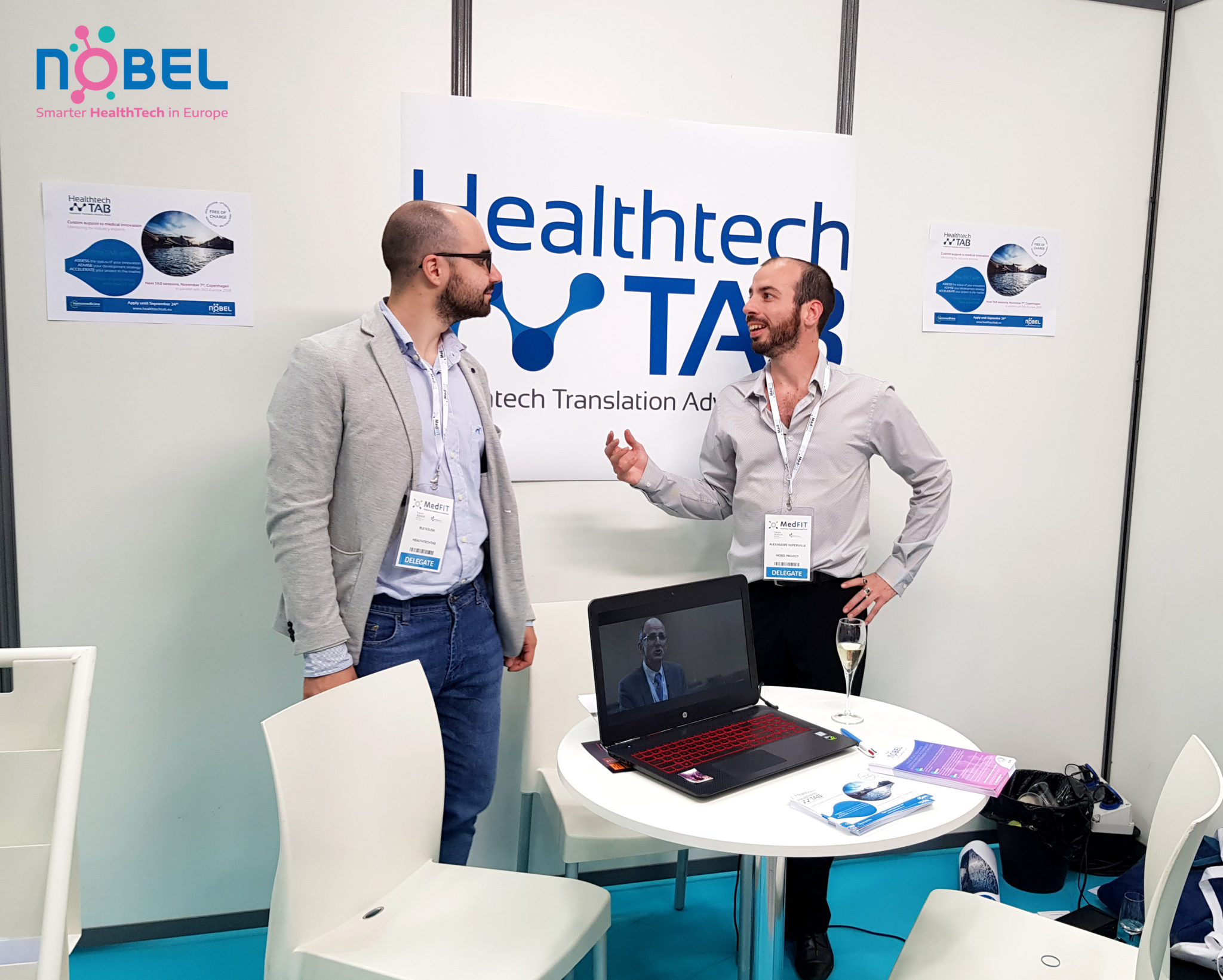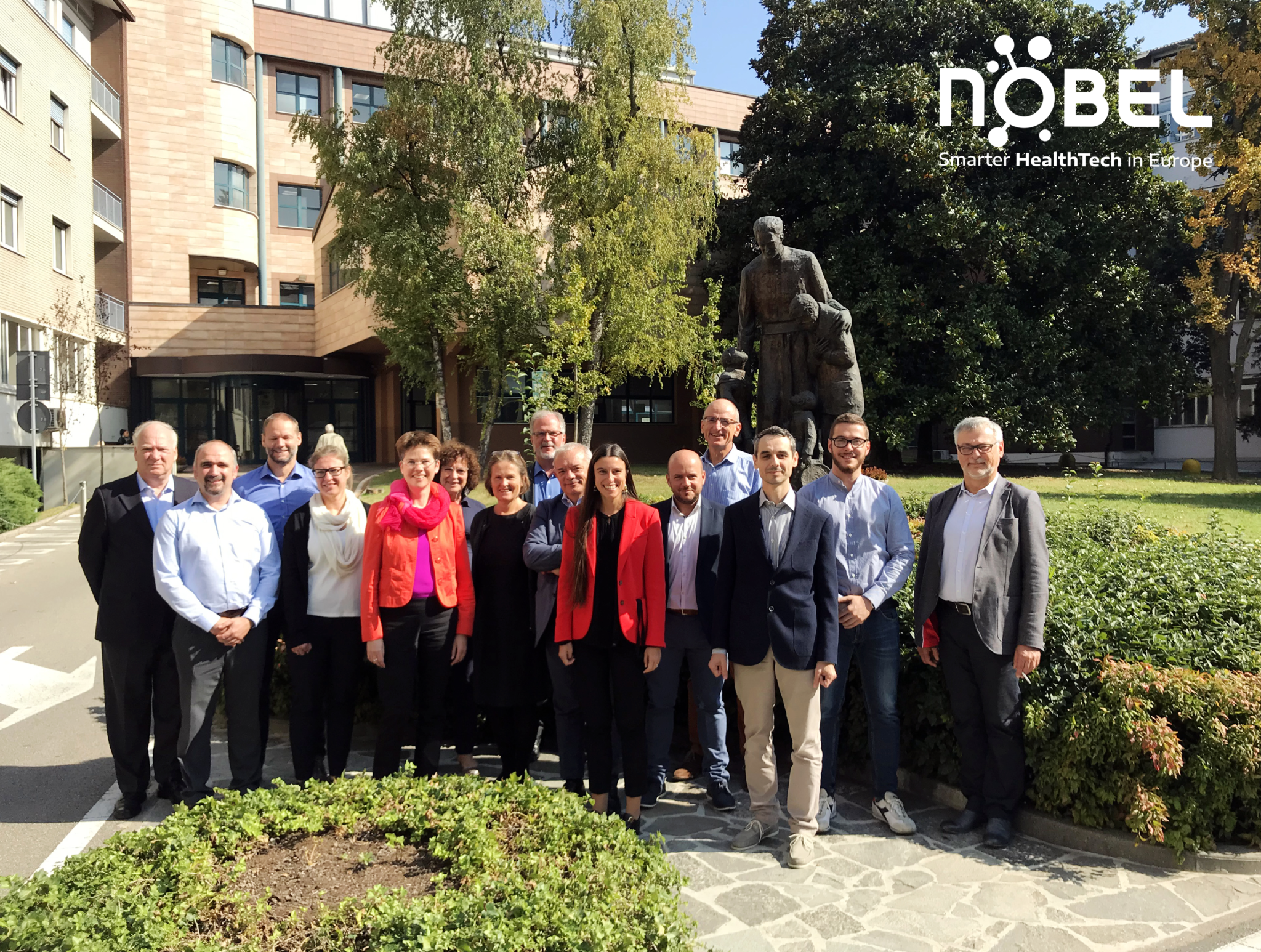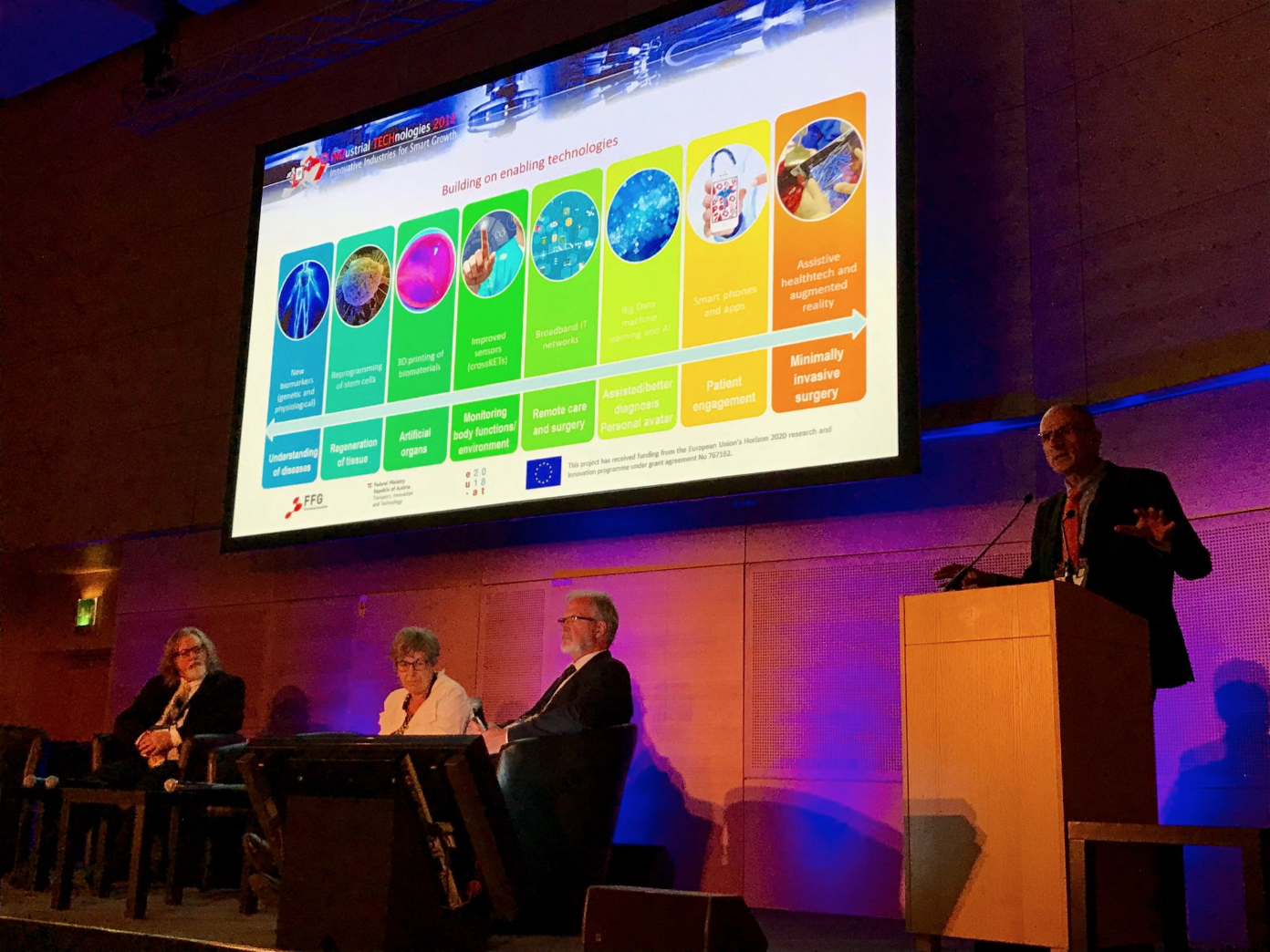Photonics for healthcare
Photonics is the science of manipulating light. Since the invention of microscopes at the end of the XVIth – beginning of the XVIIth century, photonics has totally changed our understanding of biology and medicine. Modern microscopy can detect and manipulate not only cells of the human body, but also bacteria, virus, DNA, proteins and even atoms, in real-time. It allows to study and detect diseases, monitor their progression, choose the right drug to use, etc. Simple medical devices like glasses, or high-tech medical imaging systems, like full-body scanners, are already widely used. Many other applications of photonics in healthcare are already available: eye surgery corrects vision efficiently; photodynamic therapy (using specific lasers) and radiotherapy are commonly used to fight against cancer. Photonics also allows to see and separate normal versus pathological cells of an individual, in order to diagnose diseases in the laboratory, and then choose optimal treatment for each patient. On another scale, optical fibres allow ultra-fast transport of medical data enabling remote surgery for instance. In the future, the inclusion of photonic technology in medical devices will allow them to “see”, i.e. to monitor their own efficiency and detect the patient’s health condition in real-time.
Photonics includes all sciences, technologies and branches that involve light: optics, vision, laser, telecom, etc. It regroups the study and manufacturing of components allowing light generation, detection and manipulation. These devices show significant design advantages: light moves 1014 times faster than electrons and light of certain wavelengths can pass through many biological barriers without undesired interacting.
The photon is the particle of light. The modern concept of photon was developed gradually by Albert Einstein in the early XXth century. Its general definition was adopted in 1926 after a publication of the physical chemist Gilbert N. Lewis in Nature.
What does photonics bring to healthcare?
The use of light has revolutionised biology and medicine several times in History. Back to the XVIIth century, the optical microscope first reset our knowledge of biological tissues, origin of diseases, and our ability to diagnose & cure them. In the last decade, high-resolution combinations of light and electron microscopy allowed to study the structure of biological tissues at a drastically smaller scale, reaching real-time and dynamic visualisation of complex macromolecules like DNA and proteins. Even more recently, biophotonics research has created new solutions for clinical diagnosis and therapies. The current applications of photonics to healthcare are therefore very broad:
- Ophthalmology deals with the diagnosis and treatment of eye disorders. It indeed uses the photonic optics principle in medicine, from simple medical devices like glasses to laser surgery.
- Medical imaging is crucial from preclinical research to clinical diagnosis and treatment monitoring as it allows to detect, highlight and track any biological component or micro-organism.
- Targeted treatments based on light and radiotherapies are vastly used, notably in oncology.
- Biology manipulation technics like flow cytometry give access to personalized medicine by notably allowing to sort pathologic vs. normal cells of patients.
- Optical fibre technology has revolutionised communication technologies allowing massive data transfer needed for remote surgery for instance.
Improved prevention and diagnosis
Thanks to easy-to-access, non-invasive, low cost, continuous and portable screening methods
Precise localisation of malignant tumours and functional analysis of diseases
Safer and personalised therapies
Image-guided interventions
Continuous remote monitoring of patient health parameters
Thanks to photonic components included in wearable device
Photonics for healthcare applications
The global nanomedicine market
2016
US$530
billion
%
Annual growth rate
2022
US$795
billion
How will NOBEL support the photonics for healthcare community?
- The European project NOBEL is a Coordination and Support Action (CSA) under Horizon 2020 aiming to help the convergence of photonics with other key enabling technologies with applications in healthcare: nanomedicine, robotics, advanced materials and digital health. NOBEL is coordinated by the ETP-Nanomedicine
- European Technology Platforms (ETPs) represent each individual technological community at the European level and help bridging those communities with the European Commission. Six ETPs that have applications in healthcare are associated to NOBEL: ETP-Nanomedicine, Photonics21, EU-Robotics, EU-MAT, the European Society of Biomaterials and the ETP for Smart Systems Integration (EPoSS). The NOBEL Project provides them with a meeting space and dissemination by organising annual meetings of their representatives and sharing information from each of them to the HealthTech community
- The NOBEL Project provides the ecosystem with strategic documents on the future of HealthTech in Europe by combining the inputs of all its Associated Partners in a single vision: the Continuum of Care, a vision for the future of healthcare in Europe
All terms are defined in the Glossary.
The list of technologies/companies described in these fact sheets is not exhaustive and does not intend to promote any particular actor of the HealthTech community nor to advertise particular company.

